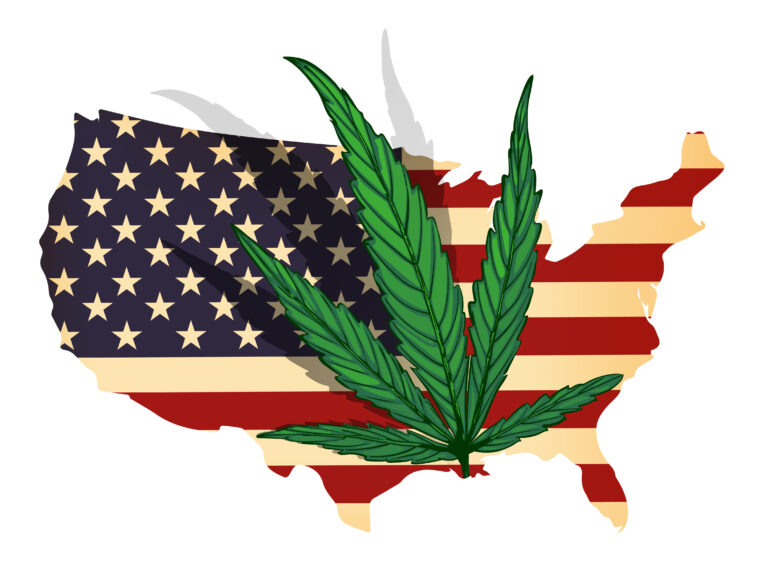On May 16, 2024, The Drug Enforcement Administration, Department of Justice published a proposal to transfer marijuana from Schedule I to Schedule III of the Controlled Substances Act. The proposal is based on the views of the Department of Health and Human Services (HHS) that marijuana has a currently accepted medical use (CAMU); poses less potential for abuse than Schedule I or II drugs; and that chronic (but not acute) use can produce low to moderate psychic and physical dependence, but the potential is less than that associated with tobacco, opiates, and alcohol. These findings correspond to the criteria for placement of a substance in Schedule III. Factoring into the analysis as well, is the legalization of medical marijuana use by 38 States, the District of Columbia, and four Federal Territories.
The rescheduling proposal also provided a historical look at the scheduling of marijuana which began with the Congressional enactment of the CSA in 1970 when marijuana was placed in Schedule I. Though the Attorney General is authorized to amend this initial placement, DEA and HHS last examined the issue eight years ago, in 2016, when the DEA denied two petitions to reschedule marijuana. At the time, HHS concurred that marijuana should remain a Schedule I drug because it met the applicable criteria: (1) marijuana had a high potential for abuse; (2) it did not have a CAMU; and (3) there was a lack of accepted safety for its use under medical supervision.
Under the CSA, there are eight factors to be considered when scheduling the control of a drug:
- The drug’s actual or relative potential for abuse
- Scientific evidence of its pharmacological effect, if known
- The state of current scientific knowledge regarding the drug or other substance
- Its history and current pattern of abuse
- The scope, duration, and significance of abuse
- What, if any, risk there is to the public health
- Its psychic or physiological dependence liability
- Whether the substance is an immediate precursor of a substance already controlled
DOJ reviewed the scientific and medical evaluation and scheduling recommendation provided by HHS and conducted a separate review of the eight factors, however, DOJ is also required to treat HHS’s scientific and medical determinations as binding.
Controlled substances can be placed into one of five levels:
- Schedule I drugs have a high potential for abuse, no CAMU, and a lack of accepted safety for use under medical supervision.
- Schedule II drugs also have a high potential for abuse but have a CAMU and abuse may lead to severe psychological or physical dependence.
- Schedule III drugs have a lower potential for abuse when compared to drugs in schedules I and II, have a CAMU, and abuse may lead to moderate or low physical dependence or high psychological dependence.
- Schedule IV drugs have a low potential for abuse relative to those in schedule III, have a CAMU, and abuse may lead to limited physical or psychological dependence relative to those in schedule III.
- Schedule V drugs have a low potential for abuse relative to those in schedule IV, have a CAMU, and abuse may lead to limited physical or psychological dependence relative to those in schedule IV.
Thus, the HHS studies showed that marijuana should be rescheduled to Schedule III.
On October 6, 2022, President Biden requested that the Attorney General and the Secretary of HHS “initiate the administrative process to review expeditiously how marijuana is scheduled under federal law.” In 2023, HHS conducted a scientific and medical evaluation based on a comprehensive review of available data and recommended that marijuana be transferred to Schedule III. In the May 16, 2024, announcement of the DEA’s proposed rescheduling, President Biden stated, “It’s an important move toward reversing long-standing inequities….Far too many lives have been upended because of failed approach to marijuana, and I’m committed to righting those wrongs.”
If enacted as proposed, the transfer of marijuana into Schedule III would mean that the manufacture, distribution, dispensing, and possession of marijuana would remain subject to the applicable prohibitions of Schedule III drugs similar to those for Tylenol with codeine, ketamine, anabolic steroids, and testosterone. However, there would be fewer restrictions than as a Schedule I drug, and it could be prescribed by a doctor.
Assuming its enactment, TAG sees the rescheduling’s reduction in restrictions and federal medical approval as a major step forward for marijuana. As an example, Schedule III status would open up business access to Internal Revenue Code Section 280E, enabling producers to claim business expenses on their taxes. This could help increase both the quality and safety of these products, as the write-offs could be used for external consultants who have expertise in these areas.
Transferring marijuana to Schedule III would clearly transform things at the federal level and may, finally, start to pave the way to nationwide legalization.
The proposal is open to comments through July 22.





